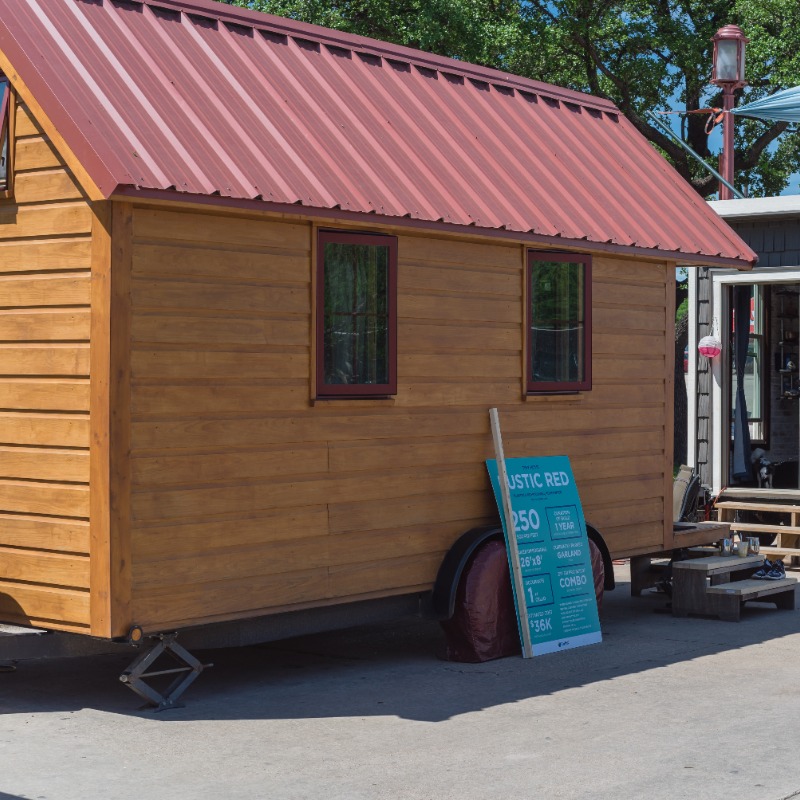According to Forbes, tiny living is a growing trend that many Baby Boomers are embracing as they enter retirement. Selling their family homes and tinysizing allows Boomers to enjoy life without the burden of mortgage debt. Tiny houses are also low-maintenance, so they’re ideal for seniors who don’t want the hassle of DIY and repair projects. Boomers may also have a desire to reduce their environmental impact or find the simplicity of a minimalist lifestyle appealing. Let’s take a closer look at ten compelling reasons why Baby Boomers are increasingly making the move to tiny homes.
1. Financial Savings

One reason Boomers may be looking to downsize in retirement is to reduce living expenses. Tiny homes provide an affordable alternative to traditional housing, cutting costs on mortgages, property taxes, and utility bills. Some Boomers may even be able to purchase their tiny homes in cash, allowing them to enjoy greater financial freedom.
These cost savings are particularly appealing for those on fixed incomes who are looking to stretch their retirement funds further. However, Boomers who have more financial resources may find tiny living appealing because it allows them to invest their savings in other areas such as travel or healthcare.
2. Simplified Lifestyle

Baby Boomers may also be drawn to the minimalist lifestyle that tiny homes promote. After years of accumulating possessions, the appeal of decluttering and simplifying life can seem incredibly appealing. A smaller living space forces a reduction in material belongings, which can be liberating and lead to a focus on experiences over possessions. This simplified lifestyle often leads to less stress and a greater sense of peace and contentment.
3. Mobility and Flexibility

The portability of tiny homes offers a level of freedom and flexibility that traditional homes cannot. After years of raising a family in the same town, Boomers may relish the idea of traveling and relocating whenever they please. Tiny homes on wheels allow them to easily explore new areas, visit family and friends, or live seasonally in different climates. This mobility is ideal for Boomers who don’t want to be tied down to one location in their retirement years.
4. Environmentally Friendly

Boomers are increasingly aware of their environmental impact and may be looking for ways to reduce their carbon footprint. A recent survey revealed that Boomers are more worried about pollution than any other generation, demonstrating their growing concern about environmental issues.
Tiny homes are more eco-friendly due to their smaller size, which requires fewer building materials and less energy for heating and cooling. Additionally, many tiny homes are built with sustainable materials and incorporate energy-efficient appliances and solar panels, aligning with the green values many Baby Boomers hold.
5. Closer to Nature

Tiny homes often come with the option of being placed in scenic locations closer to nature. Many tiny home communities are situated in beautiful destinations surrounded by nature, such as Acony Bell. It’s nestled in the mountains of North Carolina, offering picturesque views.
The smaller footprint and affordability of tiny living may also allow Boomers to splurge on their perfect plot of land. Since tiny houses don’t require much space, homeowners can opt for smaller lots, potentially enabling them to live in desirable areas like beach communities.
6. Community Living

Many Baby Boomers are drawn to the sense of community that often accompanies tiny home living. Tiny home villages and communities are popping up around the country, providing a support network and social opportunities. These communities foster a sense of belonging and shared values, which can be particularly important for Boomers seeking social connections and a supportive environment in their later years.
7. Customizability

Tiny homes offer a high degree of customization, allowing Baby Boomers to design their living space to suit their specific needs and preferences. For example, they can incorporate clever storage solutions to maximize space efficiency or design a kitchen that meets their culinary needs with high-quality appliances and ample counter space.
Since tiny homes don’t cost as much to build as regular homes, Boomers may also be able to afford to splurge on fun upgrades like granite countertops. The ability to choose nicer finishes or install amenities like outdoor decking allows Boomers to more fully enjoy their living spaces.
8. Reduced Maintenance

Another reason Boomers find tiny homes appealing is reduced maintenance. According to Forbes, Boomers whose kids have flown the nest are looking for low-maintenance homes so they can spend more time traveling and enjoying hobbies.
Maintaining a large home can also become burdensome in old age. Now that Boomers are entering retirement, they’re looking for homes where they can age in places that don’t require much upkeep. With fewer rooms and smaller spaces, tiny homes fit the bill. Their smaller footprint makes tasks such as cleaning, repairs, and yard work much more manageable overall.
9. Accessibility and Aging in Place

Another feature of tiny homes that Boomers may appreciate is that they can be designed with aging in place in mind. Tiny home manufacturers are increasingly incorporating features that enhance safety and accessibility, such as open floor plans and single-level living instead of lofts. Boomers can also custom build a tiny home, including modifications that will make it easier to age in place. For example, adding grab bars to the shower and wider doorways can make the tiny home easier to navigate.
10. Emotional and Psychological Benefits

The transition to a tiny home can also bring significant emotional and psychological benefits. The process of downsizing and simplifying can lead to a sense of accomplishment and a renewed focus on what truly matters. Boomers may find joy in the freedom from material possessions and the increased flexibility that comes with tiny home living, such as the ability to easily relocate. Many tiny home communities are close-knit and surrounded by nature, which may also boost the happiness and well-being of Boomers who choose to tinysize.
Tinysizing Allows Boomers to Enjoy Their Golden Years

The shift towards tiny homes among Baby Boomers reflects a broader trend of prioritizing simplicity, sustainability, and financial security in retirement. By embracing this lifestyle, they gain access to a range of benefits including significant cost savings, reduced environmental impact, and the freedom of a low-maintenance, tailor-made living space.
The appeal of tiny homes lies not only in their practicality but also in the emotional and psychological advantages they offer, from a stronger sense of community to a closer connection with nature. As more Boomers discover the unique advantages of tiny home living, it is clear that this movement is more than a trend—it’s a reimagining of what it means to live well in retirement.
Read More
Boomers and The Property Tax Dilemma: 12 Little Known Ways Boomers Can Save Money On Their Property Taxes
Homeless Seniors: 11 Reasons Some Baby Boomers Are Becoming Homeless At an Alarming Rate
Read the full article here
















